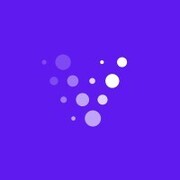
Best Data Observability Tools 2025
What are Data Observability Tools? Data observability tools help businesses monitor, trace, and understand both the quality of their data and the overall health of their data stack. Products in this category are installed on top of an existing data stack. These tools are primarily used by database owners and administrators, but they can also be useful for data analysts and other downstream data consumers. Data observability tools are an evolution of Database Monitoring software, and a ...
We’ve collected videos, features, and capabilities below. Take me there.
All Products
Learn More about Data Observability Software
What are Data Observability Tools?
Data observability tools help businesses monitor, trace, and understand both the quality of their data and the overall health of their data stack. Products in this category are installed on top of an existing data stack. These tools are primarily used by database owners and administrators, but they can also be useful for data analysts and other downstream data consumers.
Data observability tools are an evolution of Database Monitoring software, and a complement to Data Quality products. Data observability tools extract and examine metadata from tables, dashboards, and other components of a data stack. They use that metadata to map the data stack, trace data lineage, and begin monitoring for anomalies.
Data observability tools are designed to provide broad monitoring of a data stack, not granular monitoring of individual data entries. These products look at metrics over time to understand trends and baselines in data stack operations. These metrics include metadata like:
- Number of rows in a table
- Time since last refresh
- Number of NULL values in a table
- Schema changes in a database
In addition to monitoring and alerting, data observability tools help data owners respond effectively to incidents. These products include a variety of visualizations and drill-down interfaces to help diagnose the root cause of a problem. They also use their data lineage map to highlight downstream tables, queries, or dashboards that are affected by an incident. They may even automatically alert downstream consumers that their dashboards are experiencing a problem, informing them that their current data isn’t trustworthy. Used effectively, data observability products help build trust in an organization’s data and make triage and troubleshooting faster and more impactful.
Data Observability vs Data Testing
Data observability tools have some similarities to data testing tools, but their scope is very different. Data testing is focused on preventing errors before they happen. This commonly involves the use of automated test suites that validate specific behaviors in the data stack.
Data observability monitors the operations of the data stack as a whole, without relying on specifically-configured tests. Instead of validating specific individual processes, data observability monitors trends and metadata that indicate likely problems, then points users to the origin of the problem. Data observability tools may include data testing features, but they are supplemental to the overall objective of full-stack awareness.
Data Observability vs Data Quality
Data observability tools do support data quality, but they are different from data quality software. Data quality software is more granular, focusing on the quality of individual data points. These products help standardize data sources, detect and correct poorly-formed or erroneous data, and prevent bad data from being entered.
Data observability products supplement data quality software by monitoring the overall health of the data stack. They focus on trends and metadata rather than the underlying data itself.
Data Observability Tools Features
Most data observability products have the following features:
- Current-Stack Compatibility: The product can be implemented without modifying the existing data stack.
- At-Rest Monitoring: The product does not require data extraction, instead monitoring data and metadata in its original context.
- Self-Configuration: The product requires minimal or no configuration to set up monitoring. It is able to understand most data stack setups, map relationships, and detect anomalies with little manual configuration.
- Automated Anomaly Detection: The product learns from historical data to flag outliers and anomalies. Users can give feedback on anomalies to help the product learn, but the product does not require users to manually set up detection thresholds.
- Incident Alerts: The product can send alerts when an incident or anomaly occurs. These alerts may be integrated with third-party applications such as Slack or e-mail.
- Data Lineage: The product traces and visualizes data lineage, from original tables to downstream consumers, to help users understand the impact of incidents.
- Downstream Alerting: In addition to alerting data owners, the product can send alerts to downstream consumers if there is an issue with their data.
- CI/CD Integration: The product integrates with CI/CD or source control tools to detect breaking issues before they impact production. It may also link incidents to relevant code updates to help with root-cause analysis.
- Usage Analytics: The product includes analytics tools to help understand how and where data is being consumed.
Data Observability Tools Comparison
When selecting a data observability tool, keep the following factors in mind:
Ease of Setup: Most data observability tools are designed to integrate seamlessly with popular data software. However, no product has perfect coverage. Make sure you pick a tool that covers as many components of your data stack as possible without extra configuration.
Business Size: Data observability tools are marketed primarily towards mid-sized companies and large enterprises. However, some vendors may offer free versions for trial or individual usage. If you’re on your own or part of a small team, shop around for data observability products with non-enterprise editions.
Platform Integration: Some broad-scope observability tools include data observability functionality. If you’re in search of enterprise-wide tools that solve more than just data observability, you might get more value from a broad observability platform. Conversely, if you’re only interested in observability for your data stack, don’t pay for a suite of tools you’ll never use.
Start a Data Observability Tools comparison here
Pricing Information
Pricing for most data observability tools is only available via a quote from the vendor. Vendors that do list pricing tend to use a tiered per-month pricing model.
Listed prices range from $300 monthly to over $1,000 monthly depending on feature set and the number of users supported. Free tiers and free trials are available from some vendors.
Data Observability FAQs
What do Data Observability Tools do?
What are the benefits of using Data Observability Tools?
What are the best Data Observability Tools?
The following are popular data observability tools:






















